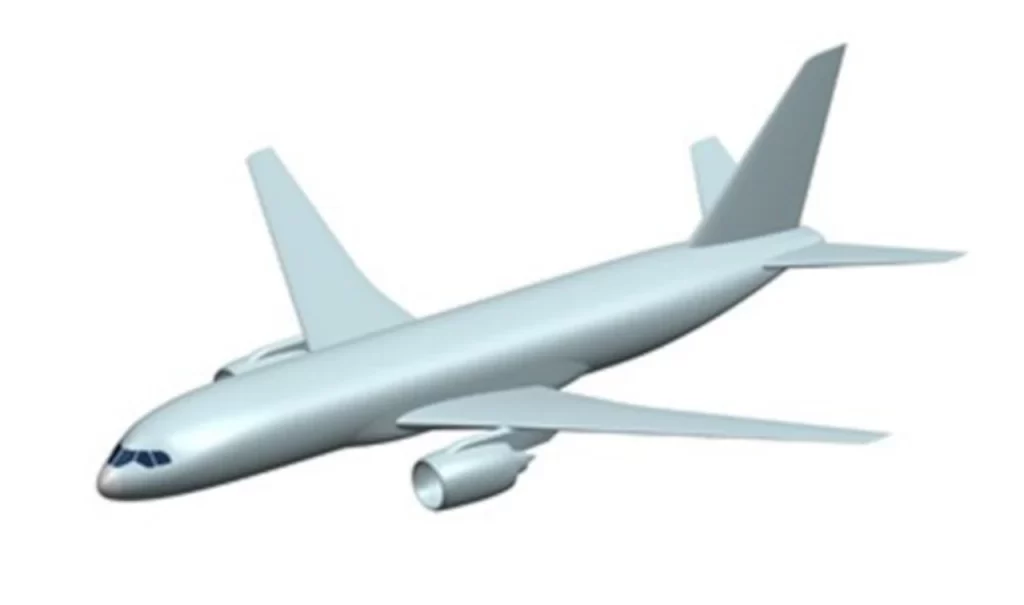TsAGI, the Central Aerohydrodynamic Institute, a leading Russian aerospace research institution, scientists presented a concept for a futuristic aircraft. The concept was presented during the “Aerodynamics and Flight Dynamics of Aircraft” seminar.
These studies discuss the concept of a future aircraft and the findings from research on particular aircraft components.
The airplane in question has an asymmetrical twin fuselage and three engines. Fuel tanks are positioned in the airliner’s right fuselage (circular cross-section), while passengers and luggage are accommodated in the left (oval cross-section).
As per TsAGI’s theoretical simulations, such a layout provides excellent aerodynamic qualities and passenger capacity.

The aircraft will be capable of transporting cargo up to 40 tons, including oversized ones, using a special pylon under the wing. It can also be used as a carrier for space vehicles. The project was developed within the framework of the state program “Development of the Aviation Industry for the Period 2013–2025.”
Asymmetrical Dual Fuselage Layout
This description outlines a pretty unusual and distinctive airplane design. The asymmetrical dual fuselage layout is quite uncommon for a commercial aircraft. Most airliners have a symmetrical fuselage design, with engines under the wings on either side for stability and efficiency. Asymmetrical fuselage designs are uncommon, though certain experimental aircraft used such unusual shapes, such as the World War II-era German Blohm & Voss BV 141 and the Rutan Boomerang light aircraft.
Three Engines
Another distinguishing feature is the presence of three engines, which is uncommon among current commercial airplanes. While bigger cargo planes, such as the Boeing 747 freighter, have four engines, most commercial airlines now employ only two for efficiency and redundancy. With three engines and an asymmetrical design, this could be an experimental aircraft with a very special purpose.
The unconventional choice of having three engines in this asymmetrical aircraft design appears to prioritize redundancy even more than typical airliners. With its lack of symmetry, a single engine failure could create a more precarious thrust imbalance situation that may be trickier to manage than conventional symmetrical designs.
By incorporating a third engine, this aircraft likely aims to ensure that even in an engine malfunction, sufficient backup thrust would still be available to allow reasonably balanced flight characteristics. An extra engine’s redundancy could help mitigate the challenges of maintaining controlled flight on the asymmetric airframe if one engine goes inoperative.
Unusual Fuselage
The fuselage sections look fairly unusual. A circular cross-section for the right fuselage dedicated to fuel tanks makes sense in terms of using space for cylindrical tanks. The circular fuselage part on the left, which transports passengers and cargo, is less common. Oval shapes are typically less aerodynamically efficient than circular designs. This unusual decision could have been a compromise to increase usable cabin space within the limits of the asymmetrical form.
Overall, the combination of these design decisions – asymmetrical twin fuselages, three engines, and differing fuselage cross-sections – suggests an experimental or highly specialized aircraft configuration that differs from standard commercial airliners. It is optimized for a specific job or operating necessity, unlike traditional aircraft designs that prioritize efficiency and capacity.
TsAGI is developing various projects to develop demonstrators, long-haul, and regional aircraft, including those with distributed and hybrid powerplants. It is also working on its long-standing project, the supersonic aircraft demonstrator.

